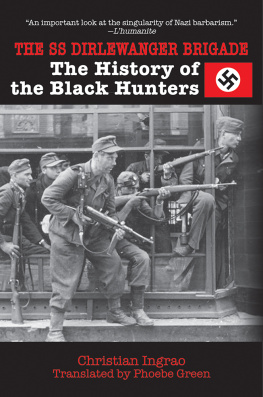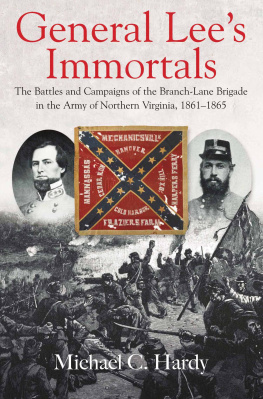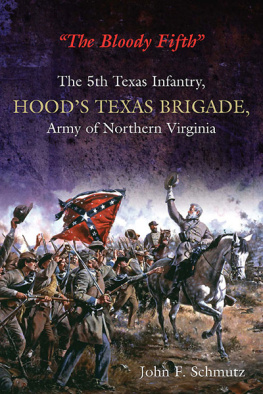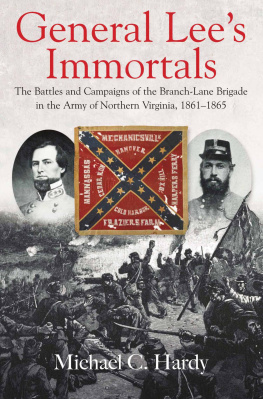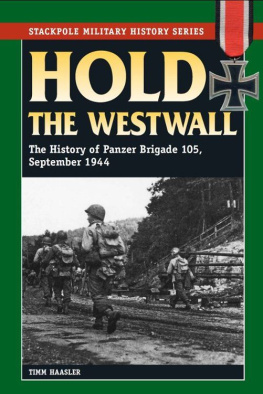GRANBURYS
TEXAS BRIGADE
CONFLICTING WORLDS
New Dimensions of the American Civil War
T. Michael Parrish, Series Editor
GRANBURYS
TEXAS BRIGADE
DIEHARD WESTERN CONFEDERATES
JOHN R. LUNDBERG
Published with the assistance of the V. Ray Cardozier Fund
Published by Louisiana State University Press
Copyright 2012 by Louisiana State University Press
All rights reserved
Manufactured in the United States of America
First printing
Designer: Barbara Neely Bourgoyne
Typefaces: Chaparral Pro and Belizio
Printer: McNaughton & Gunn, Inc.
Binder: Acme Bookbinding, Inc.
Library of Congress Cataloging-in-Publication Data
Lundberg, John R.
Granburys Texas Brigade : diehard western confederates / John R. Lundberg.
p. cm. (Conflicting worlds : new dimensions of the American Civil War)
Includes bibliographical references and index.
ISBN 978-0-8071-4347-6 (cloth : alk. paper) ISBN 978-0-8071-4348-3 (pdf) ISBN 978-0-8071-4349-0 (epub) ISBN 978-0-8071-4350-6 (mobi)
1. Confederate States of America. Army. Granburys Texas Brigade. 2. TexasHistoryCivil War, 18611865Regimental histories. 3. United StatesHistoryCivil War, 18611865Regimental histories. 4. United StatesHistoryCivil War, 18611865Campaigns. 5. Granbury, Hiram Bronson, 18311864. I. Title.
E580.5.G73L86 2012
973.7464dc23
2011034846
The paper in this book meets the guidelines for permanence and durability of the Committee on Production Guidelines for Book Longevity of the Council on Library Resources.

For my parents, Hank and Cindy Lundberg, and my wife, Jessica,
without whom none of this would have been possible
MAPS
ACKNOWLEDGMENTS
It would have been impossible to complete an endeavor of this magnitude without a great deal of support. When I first began working on this project eight years ago, I was a young historian who thought I knew much more than I actually did. I owe a great debt of gratitude to my mentor, Steven Woodworth of Texas Christian University, for his guidance about studying, writing, and publishing Civil War history and for his ability to gently knock me down a peg or two when my ego started to get in the way. Steve has been with me from the conception of this project to its completion. I also wish to acknowledge other historians in the field who helped me conceive this book. To Gregg Cantrell, Mark Gilderhus, and Richard Lowe, I truly owe a debt I cannot repay. Many thanks to Charles Grear of Prairie View A&M University, who not only agreed to make the maps for this book, but has always been a good friend and has given me valuable feedback on this project. I also want to thank Danny Sessums of the Museum of Southern History in Houston, who generously made available his research on Granburys Brigade and encouraged me in publishing this work.
In addition, I am grateful to the staffs of various libraries and archives who are unfortunately too numerous to name here. In particular, Donaly Brice at the Texas State Archives and Library Commission and Peggy Fox of the Harold B. Simpson Confederate Research Center stand out as individuals who offered extensive help and support. I also want to thank George Forgie of the University of Texas at Austin, who taught me how to become a historian, and Norman Brown, also of the University of Texas, who befriended me and always had useful advice for me.
I would also like to express my gratitude to T. Michael Parrish, of Baylor University, who showed interest in this work before it was finished and helped me greatly in preparing the final manuscript, and Rand Dotson of LSU Press, who has proved immensely helpful in the publishing process. Without them this book would never have come to fruition.
Finally, I would like to thank my parents, Hank and Cindy Lundberg, who always believed in me and provided the love and support necessary to become the person I am, and my wife, Jessica, who had to live with me while I conceived, researched, and wrote this work. Without her love and understanding, I never would have finished what I started.
GRANBURYS
TEXAS BRIGADE
INTRODUCTION
Granburys Texas Brigade contributed immeasurably to the Confederate war effort in the West. Although the brigade suffered high rates of desertion, the men who remained became the diehard Confederates of the West. The question that has divided Civil War historians since the end of the war is why. Why did Confederate soldiers stay with the cause as long as they did, and why in particular did Confederate soldiers in the western theater, deprived of battlefield victories and effective army leadership, fight for so long? Another important question is, What role did the common Confederate soldiers play in the larger Confederate war effort? A study of Granburys Texas Brigade, as perhaps the premier brigade in the premier division in the Confederate Army of Tennessee, can provide some answers to these questions.
The role the common soldiers played in the Confederate war effort has been analyzed by various historians, especially since the 1980s. There are two distinct schools of thought. Some historians have contended that a lack of Confederate nationalism and devotion to the cause among the Souths soldiers doomed the Confederacy from the outset. Most notable among the studies arguing this point of view is Why the South Lost the Civil War, by Richard E. Beringer, Herman Hattaway, Archer Jones, and William Still. These authors maintain that class divisions, the idea of a rich mans war and a poor mans fight, spiritual doubts about God being on their side, political dissent, and guilt over slavery doomed the efforts of the common Confederate soldiers, who deserted in increasing numbers toward the end of the war. Another work in this school of thought is Mark A. Weitzs More Damning Than Slaughter: Desertion in the Confederate Army. Weitz argues that Confederate soldiers deserted in large numbers throughout the war, dooming the Confederacy and causing more harm than battlefield slaughter. Other authors, such as David Williams in his Rich Mans War: Class, Caste, and Confederate Defeat in the Lower Chattahoochee Valley, maintain that class conflict helped cause the failure of the Confederate war effort.
Despite these studies, the more convincing school of thought is that common soldiers in the Confederate ranks upheld the Confederacy much longer than it otherwise would have lasted. The most prominent in these arguments is Gary Gallaghers The Confederate War. In this work, Gallagher maintains that Robert E. Lee and his Army of Northern Virginia achieved battlefield victories early and often enough to encourage a vibrant Confederate nationalism among soldiers in the field and civilians on the home front until nearly the end of the war. Ancillary to these claims, Gallagher argues that historians should focus on Confederates determination to wage bloody war for four long years in the face of overwhelming odds. Another study that bolsters Gallaghers argument is Jason Phillipss Diehard Rebels: The Confederate Culture of Invincibility,


